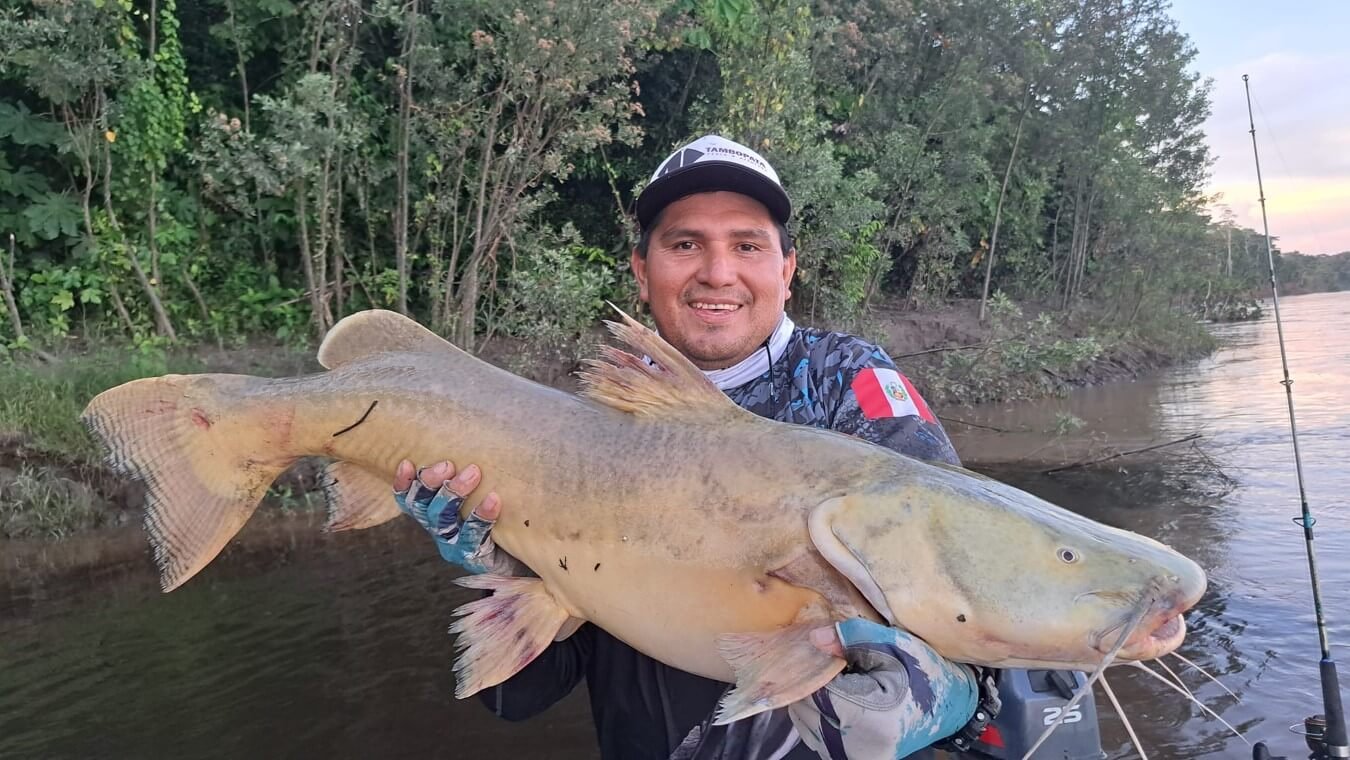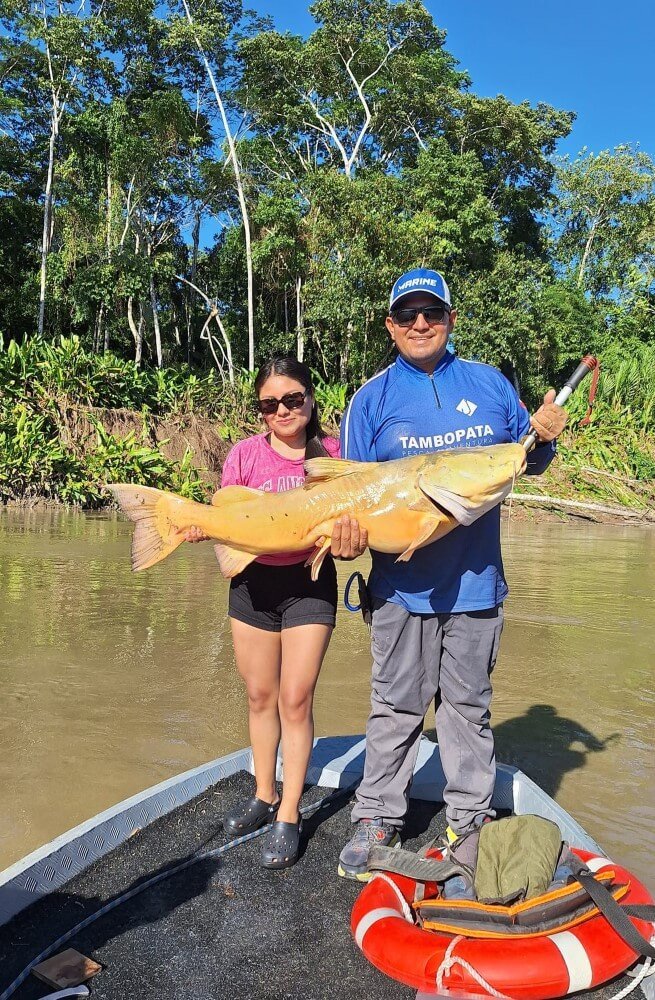The pirarucu in Loreto is much more than just a large fish. It is a symbol of Amazonian biodiversity, and its importance in the region goes beyond its impressive length. From the economy and culture to sustainable tourism, the pirarucu has proven to be a fundamental pillar for local communities in Loreto, a region in Peru where nature flourishes and opportunities for sustainable development abound.
Loreto and its Connection to the Amazon
Loreto is the largest region in Peru and one of the most biodiverse areas on the planet. Its vast territory, covered by majestic rivers and dense jungle, provides the perfect environment for wildlife, especially for the pirarucu. The Amazon River, along with the Ucayali and Marañón rivers, not only sustains a rich aquatic fauna but also supports the riverine communities that rely on fishing as their main economic activity. The pirarucu in Loreto, scientifically known as Arapaima gigas, is one of the undeniable protagonists of this ecosystem.
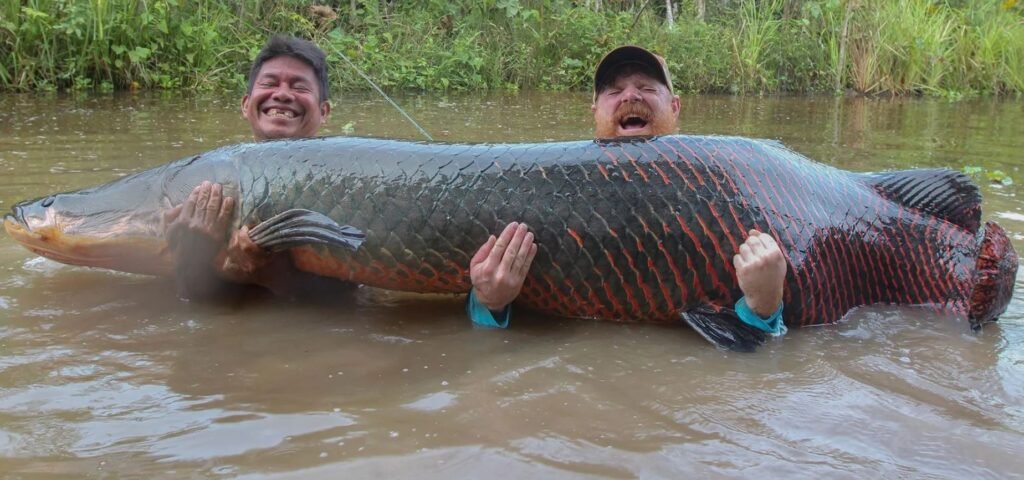
Sustainable Fishing of the Pirarucu: Key to Preservation
Over the years, fishing has been a central activity for Amazonian communities, but with the growing population and demand, it has become vital to implement sustainable practices. Despite its colossal size, the pirarucu has been vulnerable to overfishing. To combat this issue, Loreto has promoted sustainable fishing measures that ensure the conservation of the species while allowing communities to continue their traditions.
Sustainable management programs have played a crucial role, enabling local fishers to earn income without depleting natural resources. In this way, the pirarucu remains a renewable source of food and income, respecting the natural cycles of reproduction and growth of the species.
The Pirarucu’s Impact on Loreto’s Economy
The pirarucu has not only been essential for local biodiversity but has also driven Loreto’s economic development. Indigenous and riverine communities living near the great rivers have turned pirarucu fishing and trade into a profitable economic activity.
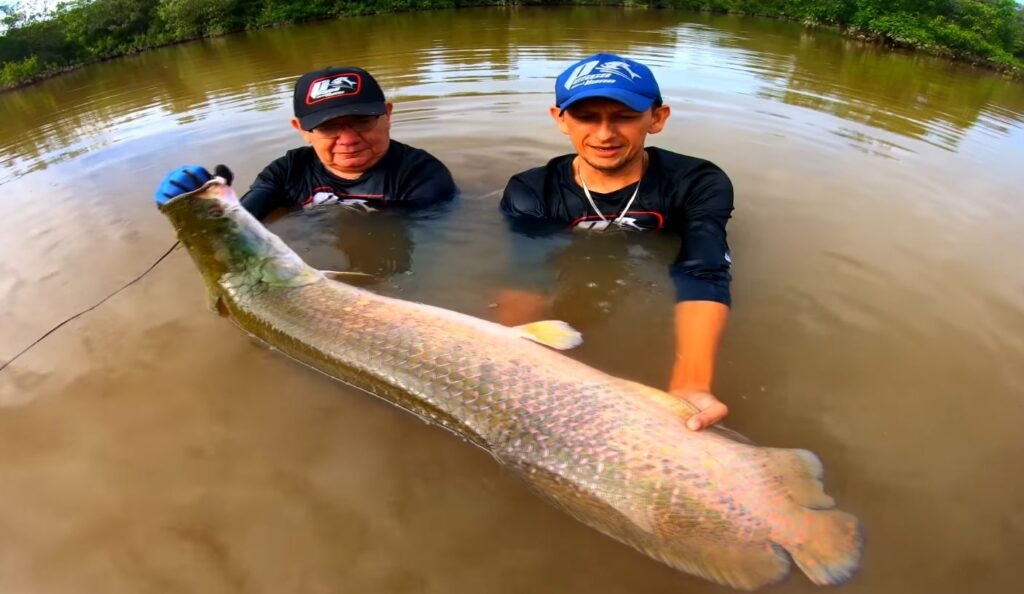
Thanks to initiatives that promote sustainability and conservation, such as fish farms, pirarucu farming has grown significantly. These aquaculture farms not only allow for a continuous supply of this valuable fish without affecting wild populations, but they also generate employment for many families in the region. Pirarucu production in fish farms has helped diversify income sources in Loreto, contributing to improving the living conditions of local residents.
The Pirarucu as a Tourist Attraction in Loreto
One of the most notable aspects of Loreto’s economic growth is related to tourism. In recent years, ecotourism has flourished in the region, and the pirarucu has played a central role in this trend.
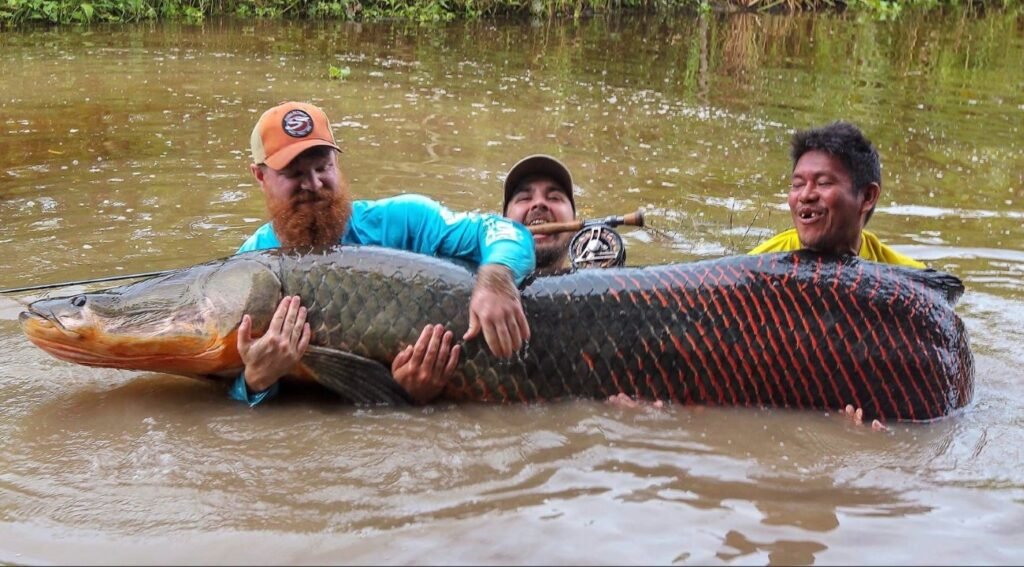
Tourists visiting Loreto seek to immerse themselves in the magic of the Amazon, and few experiences are as fascinating as observing the majestic pirarucu in its natural habitat. Through boat tours on the Amazonian rivers, travelers have the opportunity to witness the beauty of this aquatic giant while learning about its ecological and cultural importance.
Lodges and nature reserves in Loreto have developed specific programs for pirarucu conservation and observation, which have attracted ecotourists from around the world. These programs not only provide unforgettable experiences for visitors but also raise awareness about the importance of protecting this species and the Amazonian ecosystems in which it lives.
A Jungle Delicacy: Pirarucu in Local Cuisine
In addition to being a marvel of nature, the pirarucu has gained popularity in Amazonian cuisine. Its meat is highly prized for its mild flavor and high protein content. In the markets of Iquitos, the capital of Loreto, it is common to find dishes prepared with pirarucu, from fresh ceviches to juicy grilled fillets.
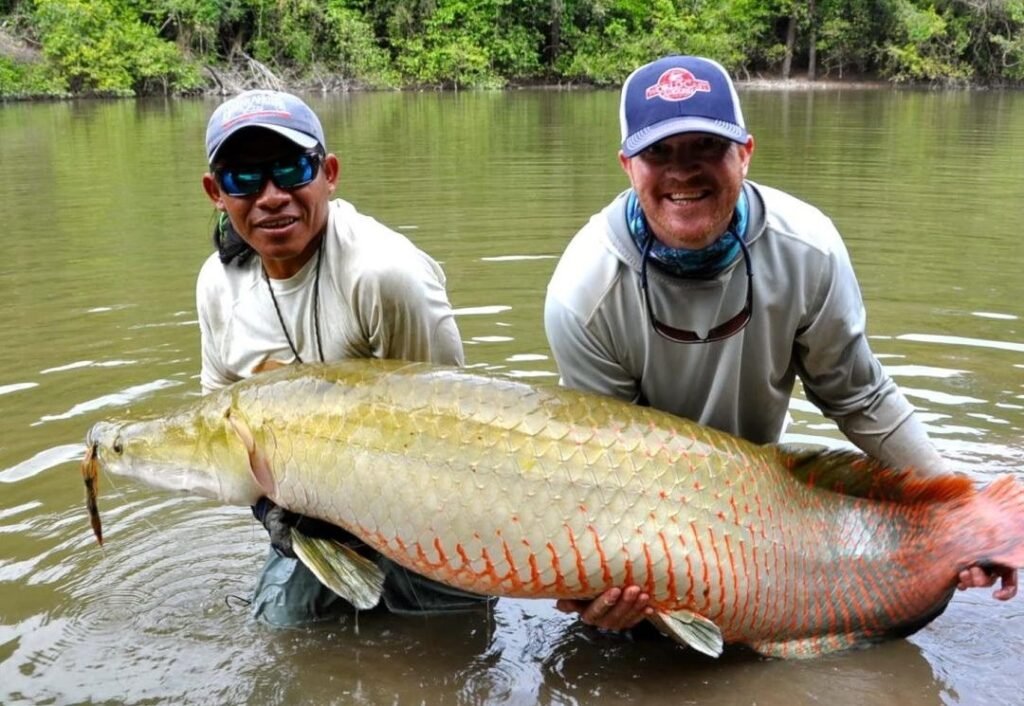
The growing demand for this fish in local restaurants has encouraged responsible fishing and fish farming. In this way, the local cuisine has found in the pirarucu an endless source of culinary inspiration, which in turn has boosted the restaurant industry and generated more employment for the people of Loreto.
Preserving the Future of the Pirarucu: Challenges and Opportunities
Despite the success of conservation initiatives and the positive impact on the economy and tourism, the pirarucu still faces several challenges. Climate change, deforestation, and river pollution are constant threats to the delicate balance of the Amazon. To ensure a sustainable future for the pirarucu and the communities that depend on it, it is crucial to continue investing in sustainable management programs and environmental education.
The pirarucu in Loreto has proven to be a valuable resource for both the economy and the cultural and natural preservation of the region. As time progresses, the key will be finding the perfect balance between economic development and ecological conservation. Loreto, with its rich biodiversity and ancestral traditions, has all the potential to continue being a model of sustainability in the Amazon.
Frequently Asked Questions About the Pirarucu
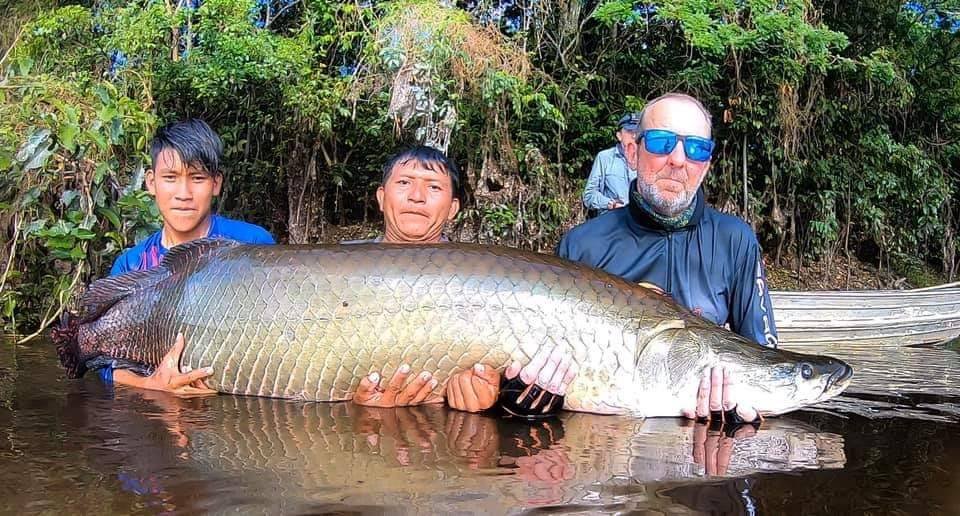
What is the pirarucu?
The pirarucu (Arapaima gigas) is one of the largest freshwater fish in the world, native to the Amazon Basin. It can grow up to three meters (10 feet) long and weigh over 200 kg (440 pounds).
Where can the pirarucu be found in Loreto?
The pirarucu is found in the Amazonian rivers and lakes of Loreto, particularly in the Ucayali, Marañón, and Amazon rivers.
How does the pirarucu contribute to Loreto’s economy?
The pirarucu generates income through sustainable fishing, the trade of its meat, and ecotourism. Additionally, its farming in fish farms has boosted the local economy without putting the wild population at risk.
Why is sustainable fishing of the pirarucu important?
Sustainable fishing is essential to preserve pirarucu populations and ensure that local communities can continue benefiting from this resource in the long term.
How has the pirarucu impacted tourism in Loreto?
The pirarucu has attracted ecotourists who want to observe this giant in its natural habitat, driving the growth of sustainable tourism in the region.
What dishes are prepared with pirarucu in Loreto?
The pirarucu is used in various dishes, such as ceviche, grilled fillets, and soups, and is a highly valued ingredient in Amazonian cuisine.
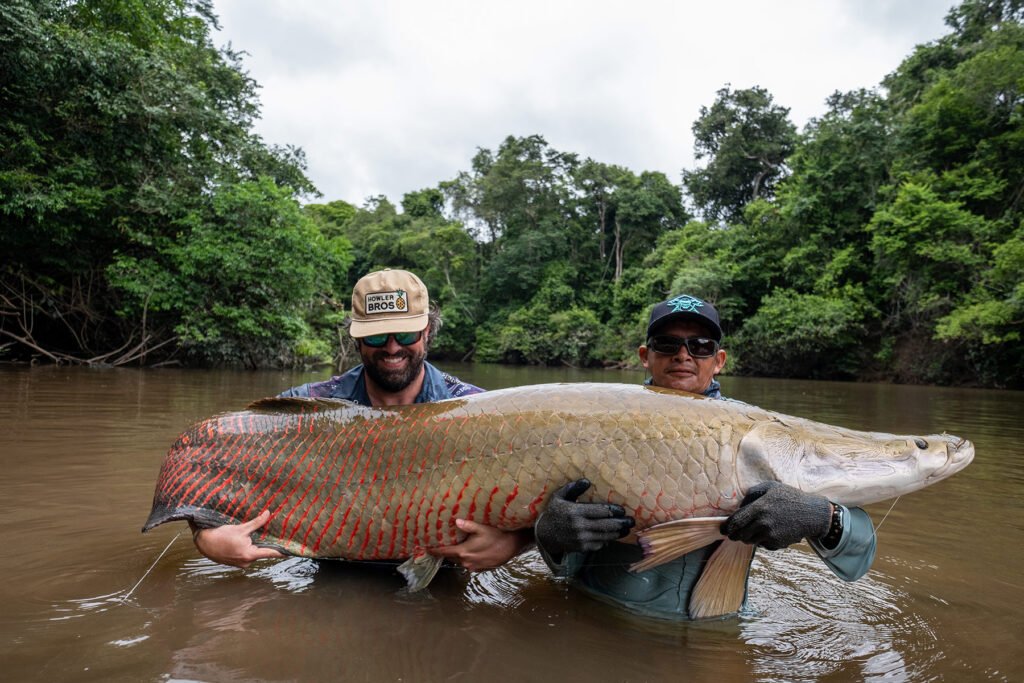
Sport Fishing in Tambopata 2 days
MORE INFORMATION HEREReady for a unique Amazonian experience in Loreto, Peru? Discover the majestic pirarucu, the giant of the Amazon rivers. Book your ecotourism adventure now and immerse yourself in the biodiversity of the Peruvian jungle.




